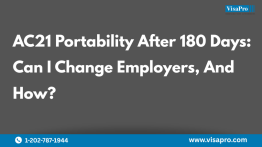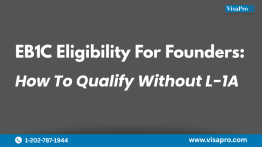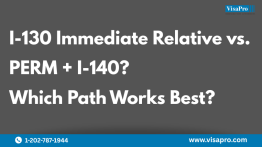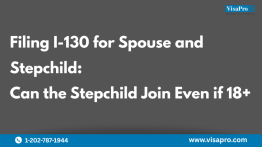Quick Summary:
Yes, you can hire your own attorney to process your green card, even if your employer is the sponsor. If you’re in L-1A status, you may qualify for the EB-1C category, which is significantly faster than the H-1B route. In this guide, you’ll learn exactly how the L-1A to EB-1C green card process works, how long it typically takes, and how to avoid common pitfalls that delay or derail approval.
Green Card Through Your Own Attorney: What You Need To Know
Yes, you can hire your own immigration attorney for the green card process.
Your employer must still provide documentation and sign the I-140 petition, but you’re not required to use their lawyer. In fact, hiring your own attorney can help protect your interests and reduce delays.
Many skilled professionals worry that hiring their own attorney might offend their employer or complicate the process. But in reality, companies, especially large or global ones, are often relieved when employees take initiative. Your immigration attorney can collaborate directly with the employer to gather documents and structure the petition, all while advocating for your best interests. This is especially critical if your case involves complex international assignments, mixed visa history, or you plan to pursue Adjustment of Status concurrently.
Real-World Tip:
If you’re planning to transition from H-1B to L-1A or already working in L-1A, start the conversation early. Many delays can occur, due to missing or delayed employer documentation. An independent immigration attorney can coordinate proactively with your HR or immigration department to avoid these roadblocks.
Why the EB-1C Green Card Path Is Significantly Faster for L-1A Executives
Green card processing through the L-1A to EB-1C route is typically 12–16 months, often far faster than H-1B-based green cards.
That’s because most L-1A executives qualify under the EB-1C category, which skips the labor certification process and often has “current” visa availability.
If you’re in L-1A status and meet the EB1C eligibility requirements, your process avoids the PERM labor certification, which alone can add 15-18 months to the green card process. Instead, EB-1C petitions involve direct filing of the I-140 immigrant petition along with Form I-485 (adjustment of status) if your priority date is current, which it usually is in the EB-1 category for most countries.
Timeframe Scenarios:
- Best Case: Filed in October 2023 from Minnesota → Green card by December 2024
- Average: 12–16 months
- Delays Possible: Up to 24–36 months in case of Request for Evidence (RFE), administrative processing, or fingerprint issues.
By contrast, if you had to go through EB-2 or EB-3, the PERM process itself is over approximately 18 months. The I-140 can’t be filed until the PERM is certified. Additionally, the EB-3 visa category is not current for any country.
EB1C Without L1A: Is It Possible?
Yes, you can qualify for EB-1C even if you’ve never held L-1A status in the U.S.
The key requirement is that you worked outside the U.S. for at least one year in the past three years (or in the 3 years prior to entry to the U.S. if you continued to work for the same international organization) in a managerial or executive role for a qualifying multinational company.
This surprises many applicants. L-1A is not a legal prerequisite for EB-1C, it’s just the most common path. If your company can document your qualifying managerial or executive experience abroad, and you are entering or already in the U.S. to continue in a similar role, you may apply directly for an EB-1C green card.
Example Cases:
- Scenario A: You worked in Canada as a Managing Director for 3 years and are now entering the U.S. in H-1B. If your role remains executive in the U.S., you may still qualify for EB-1C.
- Scenario B: A CFO enters the U.S. in B-1 status and is later sponsored directly for EB-1C after proving overseas executive work.
- Scenario C: You worked in Japan as Project Manager for over 1 year but were transferred to the U.S. in H-1B status as a Senior Engineer for a subsidiary company. The company can directly file for EB-1C if they want to promote you to Project Manager in the U.S.

How Long Do I Need To Wait Before Applying for a Green Card on L-1A?
There’s no mandatory waiting period- you can start your green card application immediately after entering on L-1A.
Some applicants begin the EB-1C process even before entering the U.S., based on their overseas experience with the sponsoring company.
This flexibility is a major advantage. L-1A to EB-1C allows companies to rapidly transition eligible executives or managers to permanent resident status, minimizing disruption to leadership continuity.
Checklist Before Filing:
You worked for a related foreign entity for 1+ year within the last 3 years
Your role was managerial or executive in nature
You’ll work in a managerial or executive capacity in the U.S.
Your U.S. employer is a branch, affiliate, subsidiary or parent of the foreign entity
L-1A vs H-1B: How Green Card Timelines Compare
The L1A to EB1C process is significantly faster than the L-1 or H-1B to EB-2 or EB-3 routes.
This is due to labor certification requirements and visa backlogs, especially for those from countries like India and China.
Comparison Snapshot:
| Factor | EB-1C | EB-2/EB-3 |
|---|---|---|
| PERM Labor Cert Required | No | Yes |
| Typical Wait Time | 12–18 months | 3–15+ years (backlogged) |
| Visa Category | EB-1 (first preference) | EB-2 or EB-3 (second or third preference) |
| Concurrent Filing Allowed | Yes (if current) | Yes (if current) |
| Best for… | Executives, Managers | Skilled Professionals |
If you’re in H-1B but your company has foreign operations, it may be worth exploring a switch to L-1A, followed by an EB-1C petition. This “visa strategy reboot” can reduce your green card wait from over a decade to just over a year.
What If I’m On L-1B? Can I Still Apply for EB-1C?
Yes, some L-1B holders do qualify for EB-1C.
L-1B is for specialized knowledge workers, while EB-1C is reserved for multinational managers or executives. If you had a managerial or executive role abroad and your role in the U.S. evolves into a managerial or executive capacity, they can sponsor an EB-1C green card. They can also petition for a change of status from L-1B to L-1A, but it’s not required.
Pathway Tips:
- Get Promoted: If you’re in L-1B, explore management-track opportunities to become L-1A eligible.
- Timing is Key: If required, file the EB-1C or L-1B to L-1A change well before your L-1B 5-year limit ends. For L-1B to L-1A, the change of status must be filed at least 6 months before the L-1B ends.
- Document Everything: Performance reviews, org charts, decision-making authority, these matter.
- Transfer Back: If your role abroad did not qualify, strategize a transfer back abroad to get the qualifying experience.
This approach, L1B to EB1C, requires expert legal strategy. Not all roles will qualify, and USCIS scrutinizes managerial roles closely. Get a detailed case assessment before investing time or money.
What If There Are Delays? What’s the Worst-Case Scenario?
While most EB-1C green cards are approved in 12–16 months, complications can stretch timelines to 2–3 years.
These delays are usually due to RFEs, security checks, issues with employer documentation or visa retrogression for those from certain countries (specifically India or China).
Common Delay Triggers:
- Incomplete or unclear evidence of managerial duties
- Background check or fingerprint issues
- Company unable to demonstrate qualifying relationship with overseas entity
- Filing errors or legal missteps
These can often be avoided by working with an experienced immigration attorney from the start. If you’re feeling overwhelmed or confused, that’s a sign to seek guidance, don’t try to “Google” your way through an EB-1C strategy.
Conclusion: Get Expert Help to Navigate L-1A to EB-1C the Right Way
The EB-1C route offers one of the fastest and most reliable paths to U.S. permanent residence, especially for qualified managers and executives from multinational companies. But getting it wrong can cost you months, or even years.
If you’re unsure whether you qualify or want to explore strategies like switching from H-1B to L-1A, VisaPro is here to help. Our immigration attorneys have successfully handled EB-1C green cards for CEOs, CFOs, Directors, and Project Managers from around the world.
👉 Schedule a Free Visa Assessment today to learn how you can accelerate your path to a green card with confidence.
Frequently Asked Questions (FAQs)
1.Can I apply for EB1C without L1A?
Yes, EB1C without L1A is possible. If you worked abroad in a managerial or executive role for at least one year and were transferred or are being transferred to a U.S. office of the same company, you may qualify, regardless of visa status.
2.How do I know if I meet the EB1C eligibility?
To qualify, you must have held a managerial or executive position for one continuous year outside the U.S. within the last three years or in the three years prior to being transferred, and the U.S. job must also be managerial/executive in nature.
3.What’s the advantage of EB1C?
The EB1C process skips labor certification and allows faster green card processing, typically 12–16 months versus several years for EB-2 and EB-3 based-green cards.
4.Can I go from L-1B to E-B1C?
Yes. If your role abroad was in a managerial or executive position and your role in the U.S. is changing to a managerial or executive position, the EB-1C becomes a viable option. While a change to L-1A may allow you more time in L-1 status, it’s not required.
5.What if my company is unwilling to sponsor me? Can I still hire an attorney?
Yes, you can hire your own immigration lawyer. However, your company must still support the I-140 petition and provide supporting documents. A personal attorney ensures your interests are fully represented and deadlines are met but the petition still “belongs” to the employer.
Thinking of filing your green card through EB-1C? Don’t navigate it alone.
Let VisaPro help you evaluate your eligibility, avoid delays, and create a winning green card strategy that works for your goals.
👉 Schedule your Free Visa Assessment now.
What VisaPro Customers Are Saying
The US [B-1] Visa has always been a tough ride, and being denied a few times it makes it even worse. But thanks to VisaPro and their meticulous processing I was granted a Visa. I would like to thank you and all the people involved in making this a success. I would like to recommend VisaPro to all those who seek peace of mind and hassle free Visa processing.”
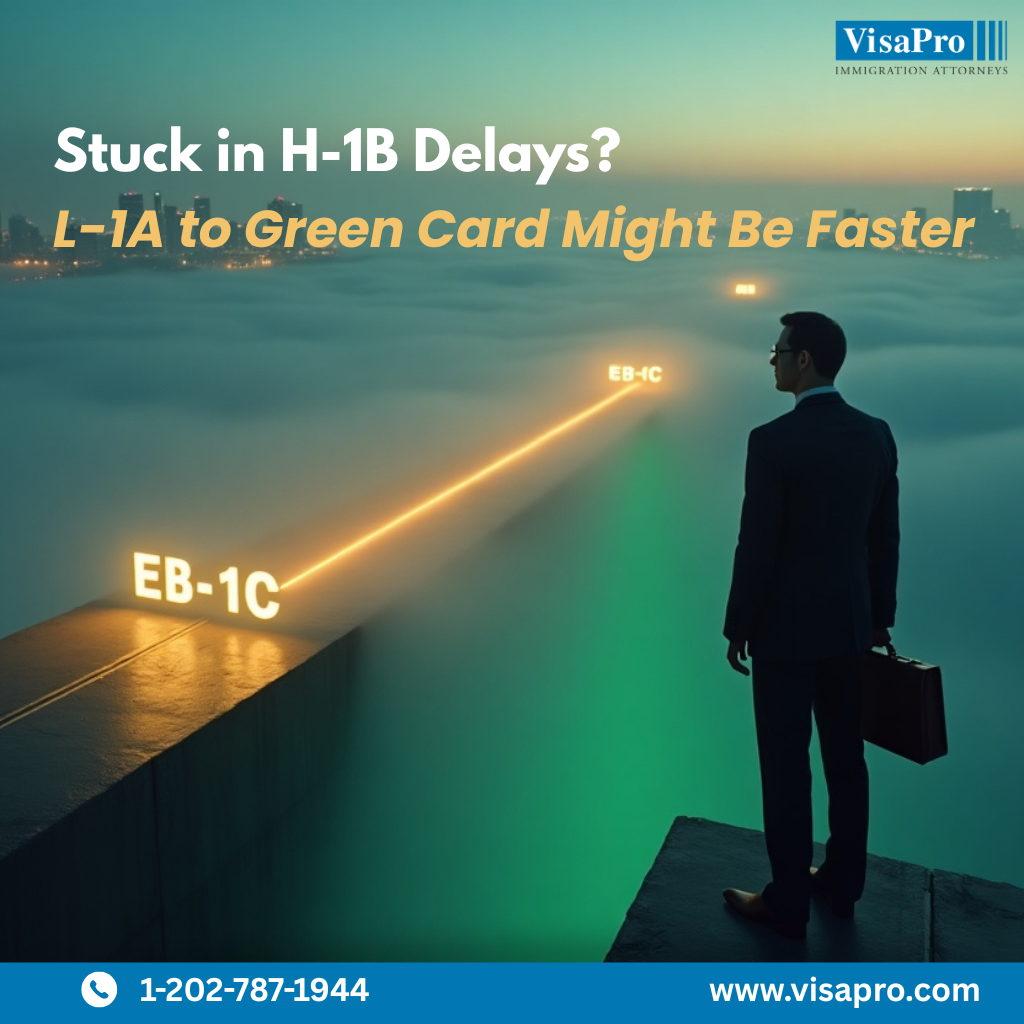
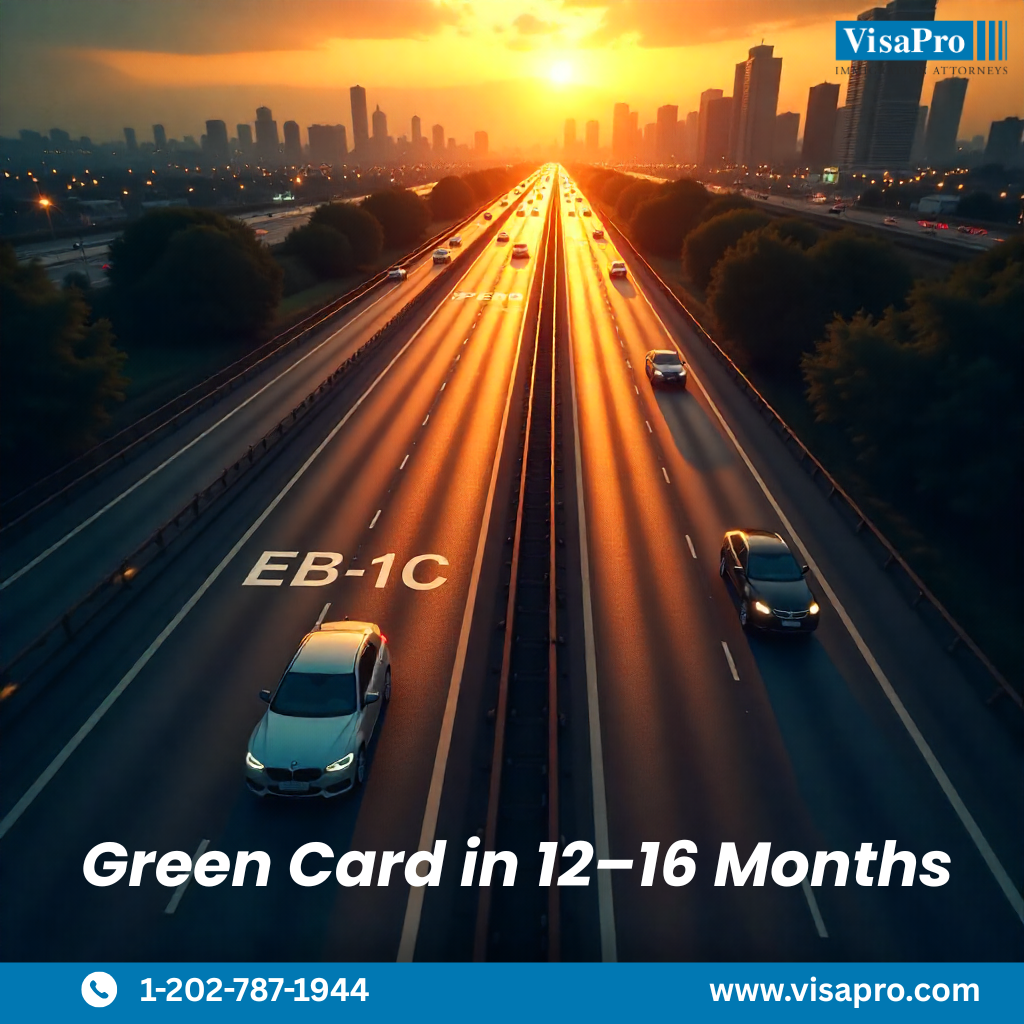
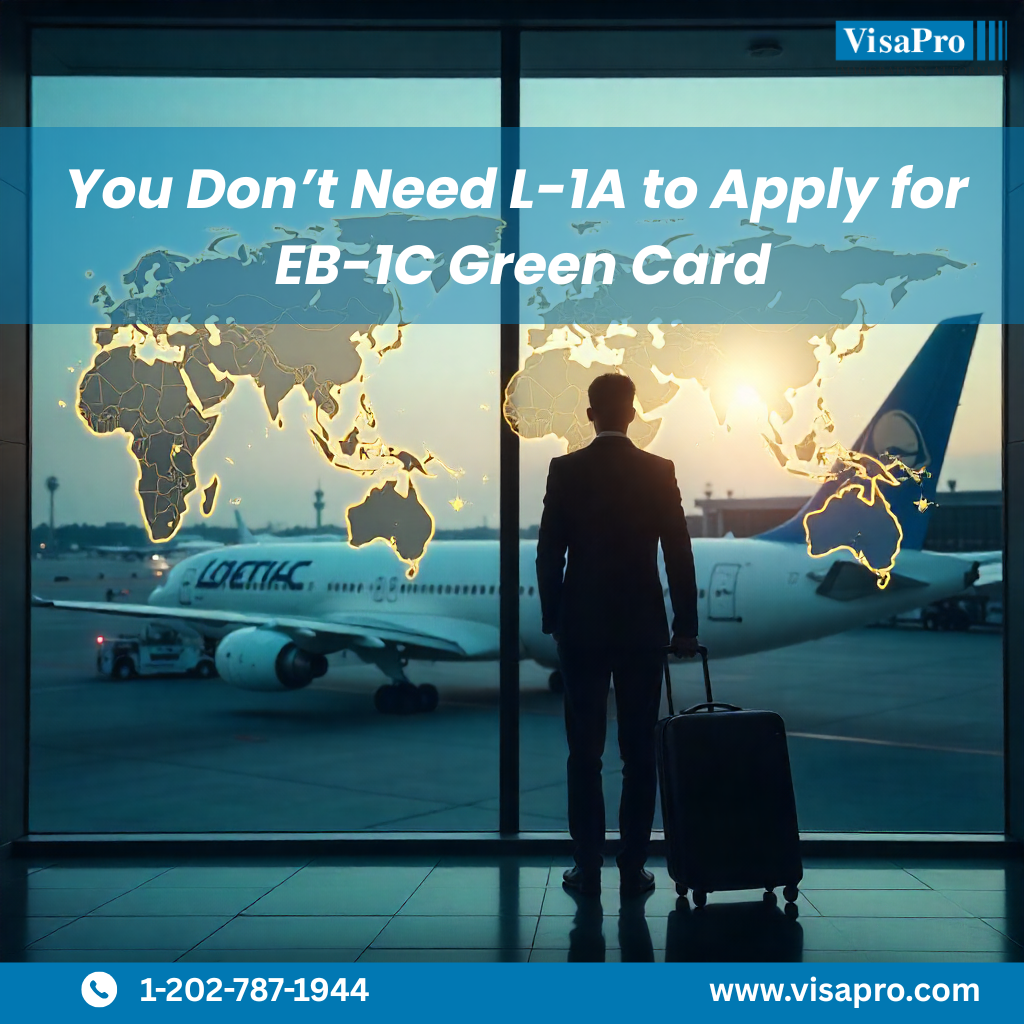

 Manas Bhat, Director Operations, First Houston Mortgage India
Manas Bhat, Director Operations, First Houston Mortgage India